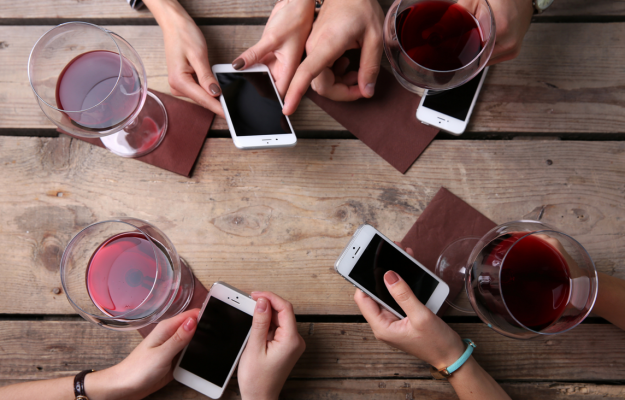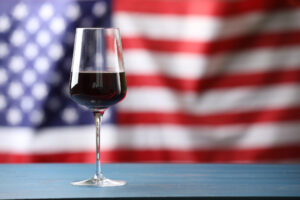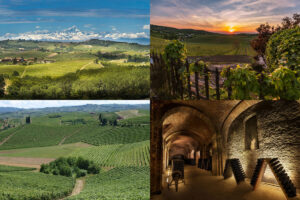Communication on fewer social networks but with more quality on the selected ones, proprietary e-commerce is growing and it is seen as an opportunity to extend the dialogue with consumers, native grape varieties at the center of the content strategy, but also as an opportunity still to be caught on the user experience of the websites, customer support by chat and use of podcast formats to tell the story of wine and territory. These are the results of the 6th edition of “Il gusto digitale del vino italiano 2019”, the research conducted by the communication company Omnicom PR Group Italia, which analyzed the presence and online activities of the top 25 Italian wine companies in terms of turnover according to the Mediobanca 2019 survey. The Tuscan wine label Frescobaldi is still leading the ranking, with 97 points, followed by Mezzacorona (96) and Masi Agricola (90) on the podium. In the top ten, there are Villa Sandi (84), Mionetto (82), Antinori (78), Banfi (74), Ruffino (72), Farnese Vini (71) and Cavit (70). Among the new entries, the highest is Fratelli Gancia, at position no. 16, with 55 points, then Cantine Ermes (45), at no. 23, and Cantine Ponte di Piave (44) at no. 24, but going down beyond the top 25 positions there are also Vignaioli Veneto Friulani, at 36, and Cantina di Conegliano e Vittorio Veneto, at 37.
Instagram continues to grow compared to the other social networks, with an increase in followers of 71% in 2018, a sign of a growing interest in the social network from brands but also from young people to the world of wine. Moreover, today 17 out of 25 companies have an official account (against 15 in 2018 and 6 in 2014). Facebook remains stable with 21 companies out of 25 to have an official account while the frequency of weekly updates improves (72% of wineries in 2018 against 84% in 2019). YouTube and Twitter are not reversing the trend of recent years, they are not well attended and updated (the first often used as an “archive”, the second to communicate sporadically about the company).
In the age of Amazon and of the players specialized in e-commerce of wine, it is interesting to notice that, in the last 12 months, companies with proprietary e-commerce have increased from 3 out of 25 (2018) to 6 out of 25 (2019). A countertrend, therefore, perhaps driven by the desire to support the consumer throughout the purchase process, without leaving to third parties, in the last mile, storytelling, product packaging and customer service. In some cases, wine is the key to be able to sell other food products or experience on the territory. All the companies mentioned, for various reasons, the native vines (in 2018 they were 64%, in 2014 only 19%). The level of examination varies: some wineries do not just mention them but dedicate space to the description of the vines and the choice of their use, others focus on the subject with an entire section of their website (and an explanation of the used program and the recovery of native vines). 13 wineries out of 25 (52%) refer to tasting tours (in 2018 they were 40%, only 15% in 2014) some, with communication designed directly for the consumer, have dedicated and in-depth sections. The most virtuous also take advantage of the tourist vocation of the territory, often with mention of areas and places to visit.
The trend of “food pairing” (wine-food pairing) is interesting, with 10 companies out of 25 protagonists. Although with different intensity, in 2019 100% of the companies (76% in 2018 and 37% in 2017) dealt with the theme of sustainability, mentioning certifications, energy efficiency, sustainable management of natural resources and pesticide-free agriculture. Finally, the narrative on social responsibility initiatives is still at the dawn of its existence, and it deepens the activities mainly related to art and culture. Today, 7 out of 25 companies talk about it.
Companies choose to communicate mainly in Italian and English on their websites. In 2019, after Italian (25 out of 25), there is English (21 wineries out of 25) followed by German (7 out of 25), Chinese (3 out of 25) and Russian (2 out of 25). Despite the potential of some emerging countries, they still prefer to focus their efforts on the languages of the “traditional” destinations for our exports. On social platforms, 10 out of 25 companies offer foreign language content. Among these 10, only 5 have pages entirely dedicated to foreign markets. As regards chats - almost all of them on Messenger - only 12 out of 25 companies have answered requests for information. This is an area of improvement because chats can direct users towards content that are relevant to them (such as product research, education on the territory, events and food and wine tours, etc.).
No company offers Podcasts, a growing and useful format to engage customers and tourists to discover the territory and its products. Areas of improvement also come from the user experience of some websites, designed to be only a showcase of products (only 8 out of 25 scored over 7 on a scale from 1 to 10) and not very engaging with visitors. Finally, external quality sites (link-in) that refer to the websites of wineries continue to be important from a SEO (Search Engine Optimization) point of view, and a good job of the press office and digital PR can help very much on this.
“The 2019 edition of our research highlights interesting trends such as the growth of companies that have proprietary e-commerce, increased in 12 months from 3 out of 25 to 6 out of 25. It is interesting because it is a sign of the desire not to leave the relationship with the customer to third parties in the last mile of the transaction and in the after-sales. Moreover, this is an important aspect to avoid that some types of products are - over time - reduced to commodities by generalist e-commerce platforms”, comments Massimo Moriconi, CEO of Omnicom PR Group Italia. “We continue to see new opportunities created by digital for our wine sector - continues Moriconi - and if in the past we talked about blockchain as a tool to certify and protect the made in Italy in the world, today we want to focus on the potential still untapped of Podcasts and Branded Podcasts. In the era of the voice we are living, wine can use these formats to inform, educate and engage consumers effectively, linking the product to the territory, tasting tours, influencers, events, and seasonality”.
Copyright © 2000/2025
Contatti: info@winenews.it
Seguici anche su Twitter: @WineNewsIt
Seguici anche su Facebook: @winenewsit
Questo articolo è tratto dall'archivio di WineNews - Tutti i diritti riservati - Copyright © 2000/2025








































































































































































































